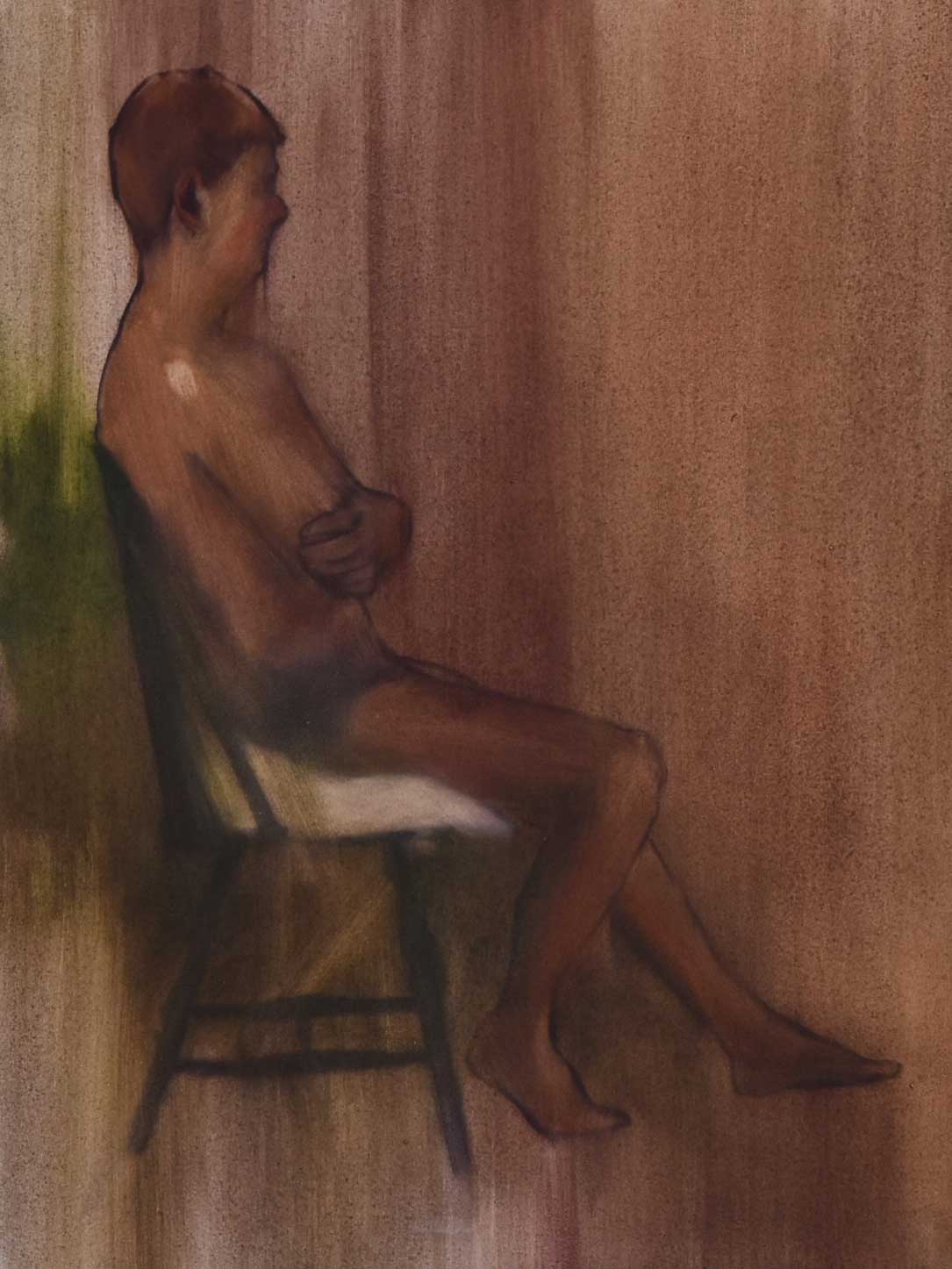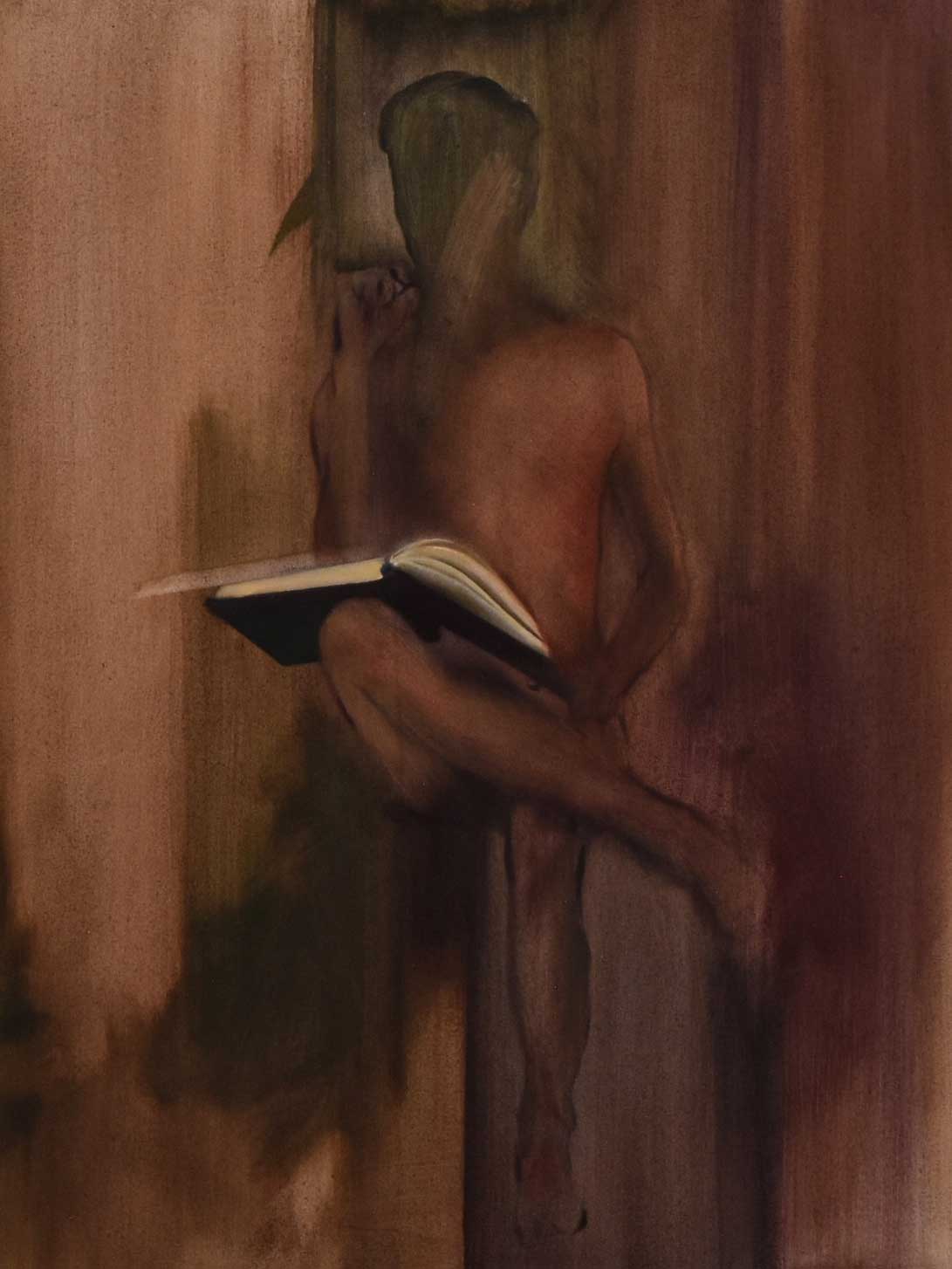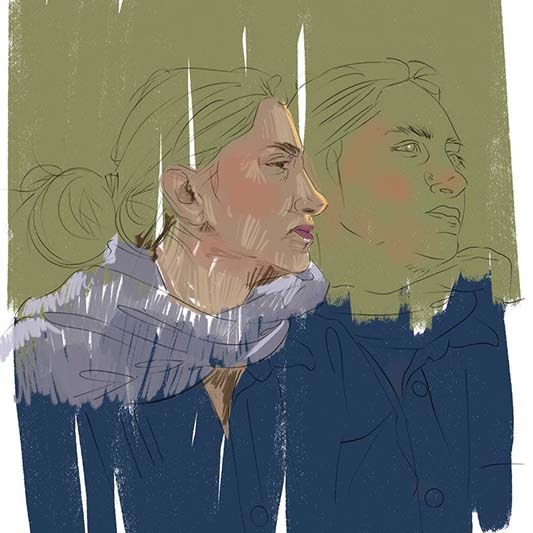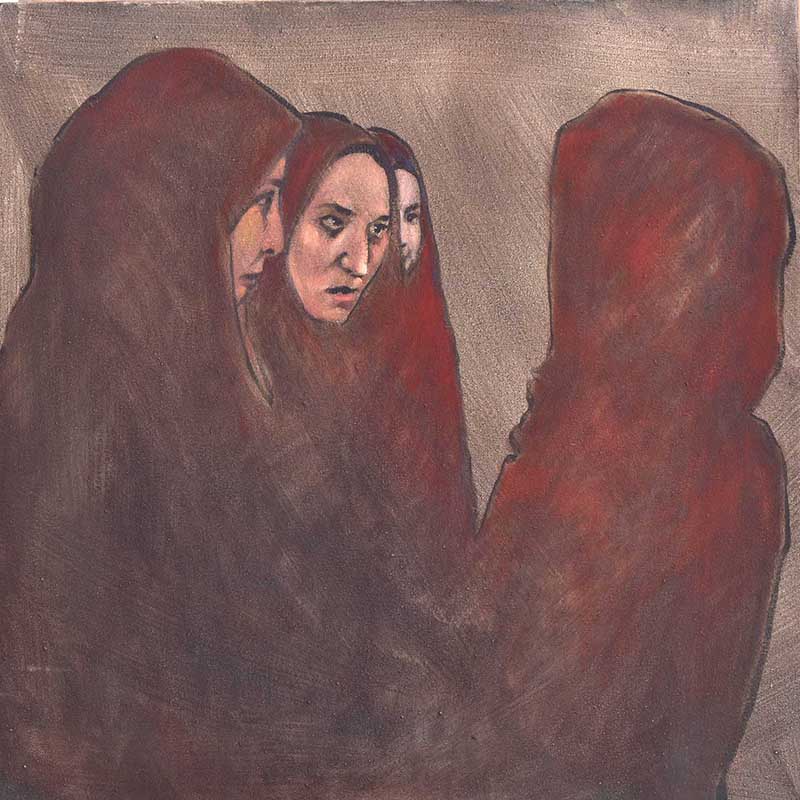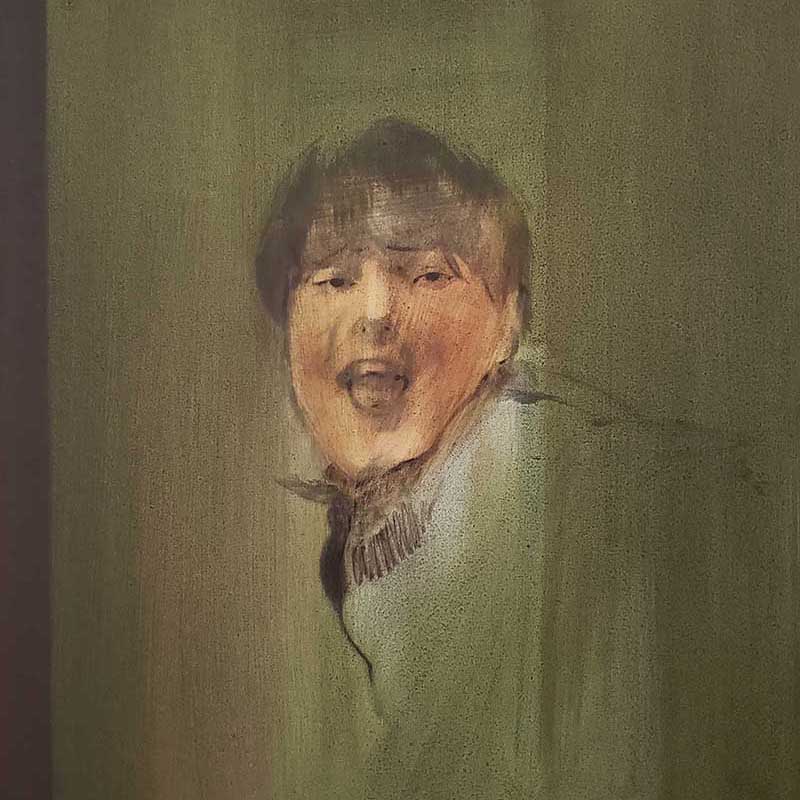One Thousand and One Nights

My creations often take their ultimate forms through destruction rather than creation. Instead of adding colors to the canvas, I usually take them off. This approach - which is in fact, a type of obsession or a failed perfectionism- end consequence of shame and imperfection notions that have plagued me from childhood. I became immediately consumed with a lust for perfection as a result. However, extreme perfectionism like this inevitably leads to failure. This is my life. It may seem like madness, but it is sure creative.


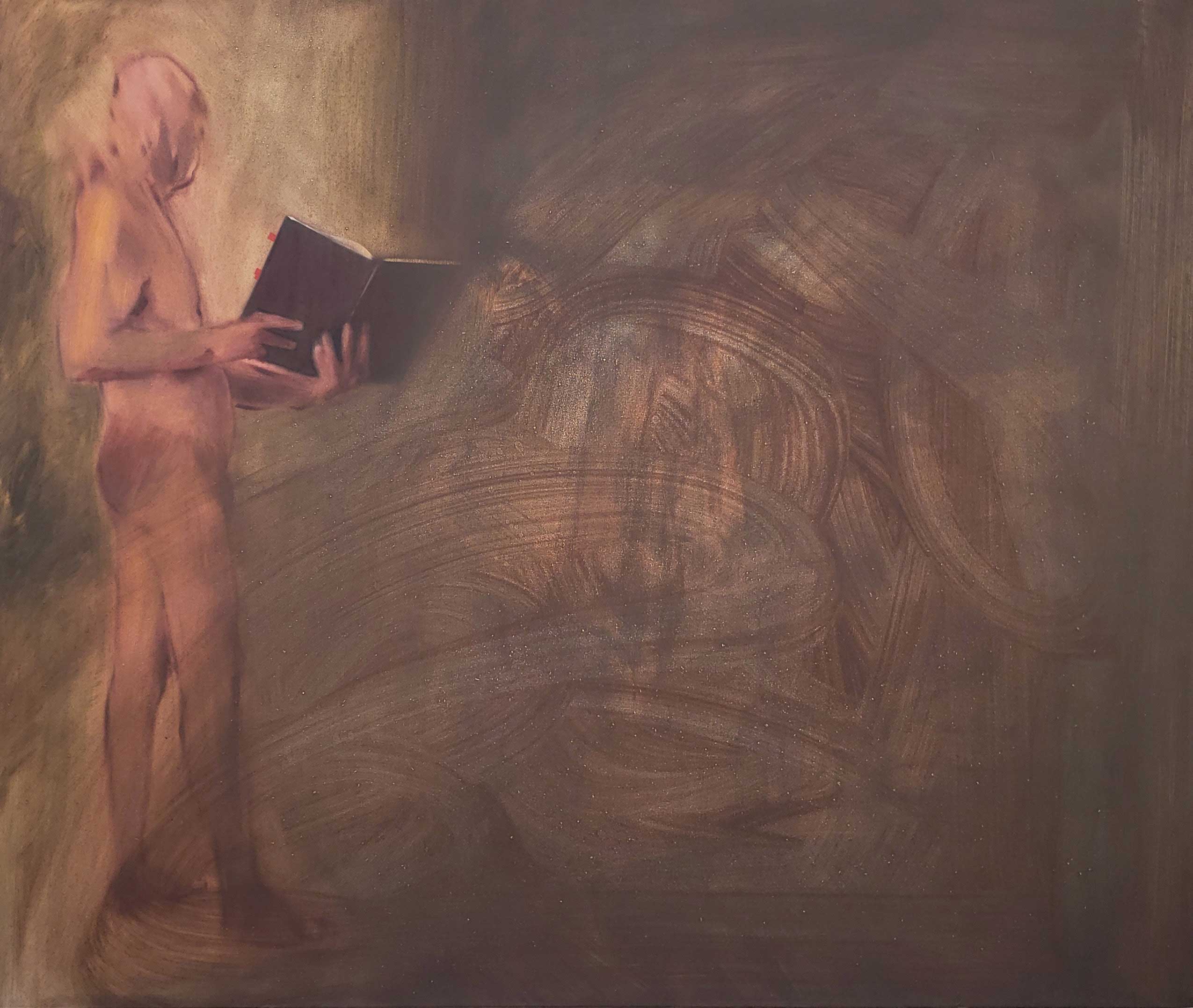
I am often told that my works are incomplete as if they were left unfinished. In reality, this is how our lives have unfolded, and my work is a direct result of living in such a society. Thus, I do not perceive any flaws in here. We quite often consider life in Iran to be transitory. Everything for us is slippery and transient. As if we are on a journey, rather at homes. This lifestyle is partially due to our most ancient beliefs and also due to our predisposition to emigrate in search of a better life. Even on the surface, our lives seem semi-finished and temporary, much like the countless abandoned construction sites scattered around the country.
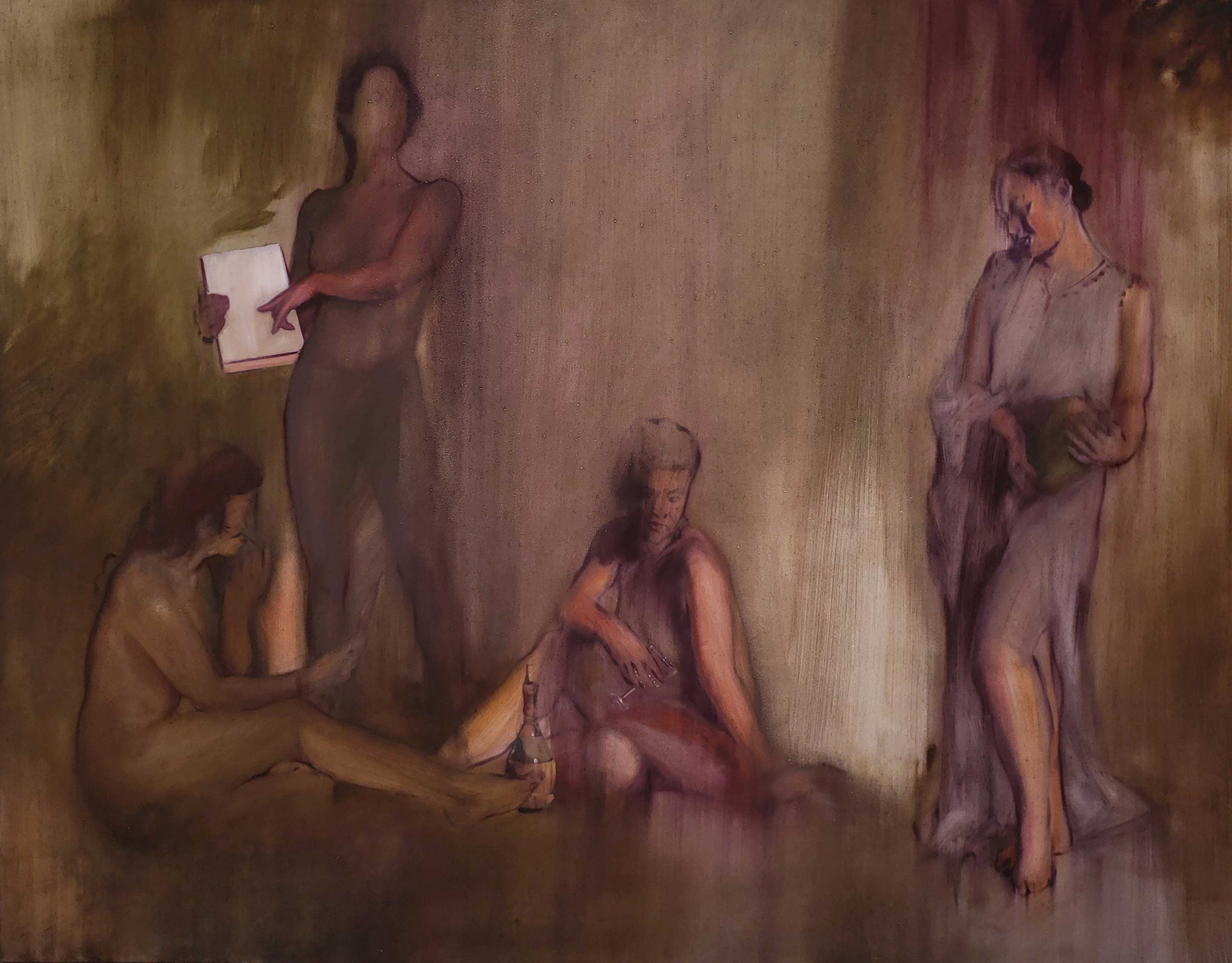
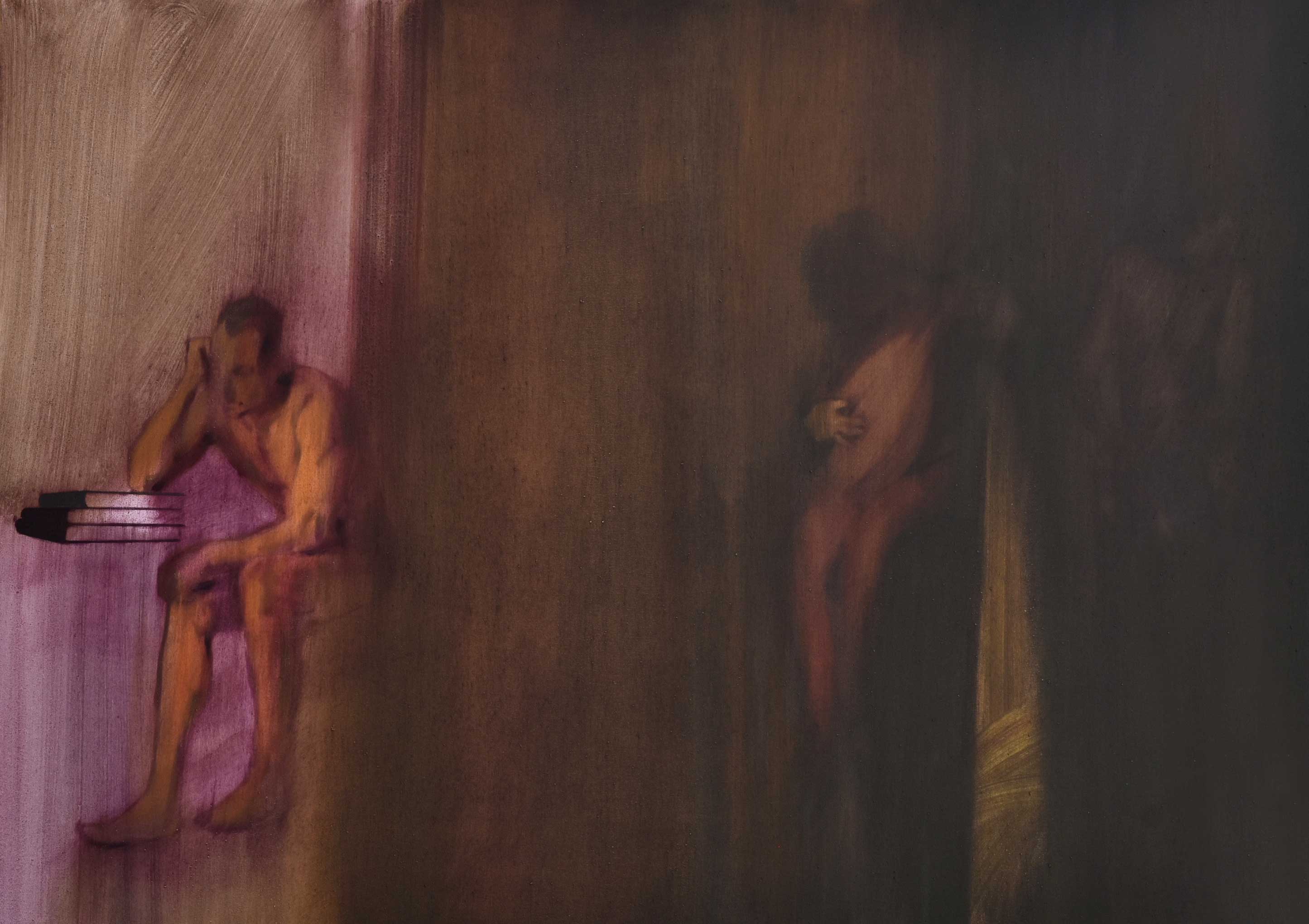

How come “One Thousand and One Nights” though? This story is a reflection of pains still with us despite the passage of many centuries: Our engagement with the concept of morality, a society that is immoral yet morality-centered society, moral codes that are not founded in reason, moralities shaken by doubt, and people torn by contradictions. The art pieces in this collection do not directly associate with a story within the book. When reading the book, my mind conjured up atmospheres, related metaphorically to this important literature piece. Then, I arranged the figures together in a sketch and gradually approached the final stage of the drawing with the process explained before.
